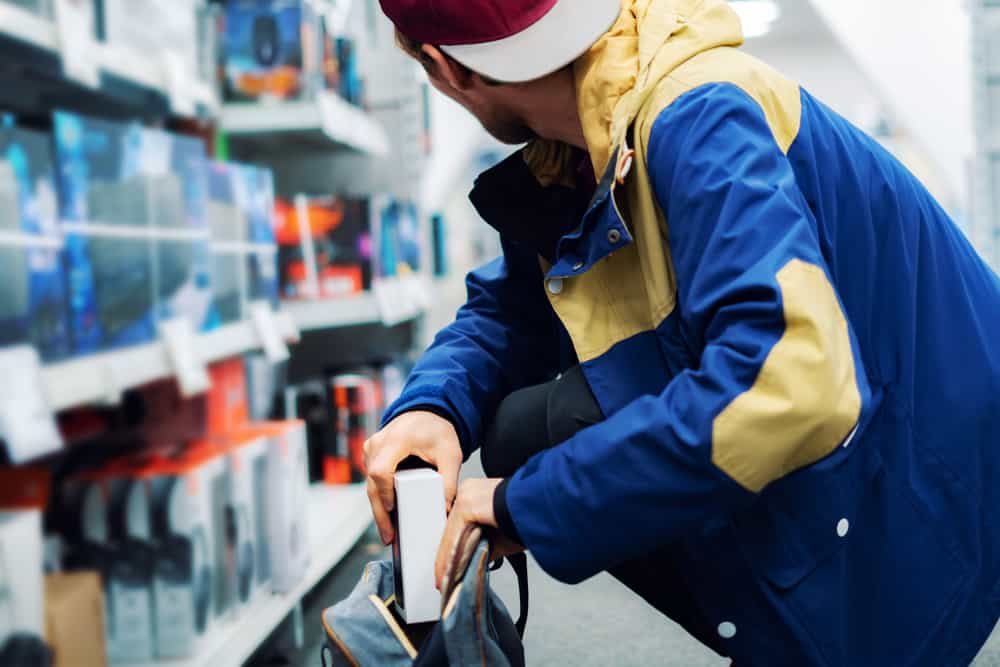
Shoplifting, the act of stealing goods from retail stores, is a persistent problem that costs businesses billions of dollars annually. Retailers face the challenge of balancing customer experience with effective security measures to deter and detect theft. While it’s important to remember that can stores tell if an item is stolen without proper evidence? The answer is no. However, retailers employ various strategies to minimize losses and create a safe shopping environment. This article explores the common methods used by retailers to combat shoplifting.
This article will delve into the different techniques employed by retailers to deter and detect shoplifting, including security cameras, electronic article surveillance (EAS) tags, and the role of trained loss prevention personnel. We’ll also examine how suspicious activity is investigated and the importance of evidence in determining if an item has been stolen.
Shoplifting Deterrence Methods
Retailers utilize a multi-faceted approach to deter shoplifting, combining physical security measures with strategies that discourage theft. These methods aim to create a visible deterrent, make it more difficult to steal, and increase the risk of being caught.
One key aspect is creating a secure store environment. This involves well-lit areas, clear sightlines, and strategically placed mirrors to minimize blind spots. Additionally, retailers often use signage and displays to remind customers of their anti-shoplifting policies and the consequences of theft.
Another important factor is employee training. Staff members are trained to be vigilant, observe customer behavior, and respond appropriately to suspicious activity. They are also educated on loss prevention techniques and procedures for handling potential shoplifting incidents.
Security Cameras
Security cameras are a ubiquitous presence in retail stores, serving as both a deterrent and a tool for evidence gathering. Visible cameras act as a strong visual reminder that theft is being monitored, discouraging potential shoplifters.
Modern security systems often utilize high-definition cameras with wide-angle lenses to capture clear footage of store aisles, entrances, and exits. Some systems even incorporate motion detection technology, which triggers recording when movement is detected in specific areas. Recorded footage can be crucial evidence in identifying suspects and reconstructing events during a shoplifting incident.
Electronic Article Surveillance (EAS) Tags
Electronic article surveillance (EAS) tags are small, passive devices attached to merchandise that trigger an alarm if the tagged item passes through a designated detection point without being properly deactivated. These tags are typically placed on high-value or easily concealable items.
When a tagged item is removed from the store without being scanned at checkout, it sets off an alarm, alerting store personnel to potential theft. EAS systems can be effective in deterring shoplifting as they create a physical barrier and increase the risk of detection.
Loss Prevention Personnel
Many retail stores employ dedicated loss prevention personnel whose primary responsibility is to prevent and investigate shoplifting incidents. These professionals undergo specialized training in surveillance techniques, customer interaction, and legal procedures related to theft.
Loss prevention officers patrol the store, monitor security cameras, and observe customer behavior for suspicious activity. They are also responsible for apprehending suspected shoplifters, collecting evidence, and preparing reports for law enforcement.
Investigating Suspicious Activity
When loss prevention personnel or store employees suspect shoplifting, they follow a specific protocol to investigate the situation. This typically involves discreetly observing the individual, gathering evidence such as video footage or witness statements, and attempting to apprehend the suspect if there is sufficient evidence.
It’s important to note that retailers cannot legally detain individuals without probable cause. If an employee suspects shoplifting, they should contact loss prevention personnel or law enforcement for assistance.
Conclusion
Shoplifting poses a significant challenge for retailers, but by implementing comprehensive security measures and employing trained personnel, businesses can effectively deter and detect theft. Security cameras, EAS tags, and loss prevention officers work together to create a layered approach that minimizes losses and ensures a safe shopping environment for customers. While can stores tell if an item is stolen without proper evidence? The answer remains no. However, retailers strive to create a secure environment where shoplifting is discouraged and incidents are effectively addressed.
